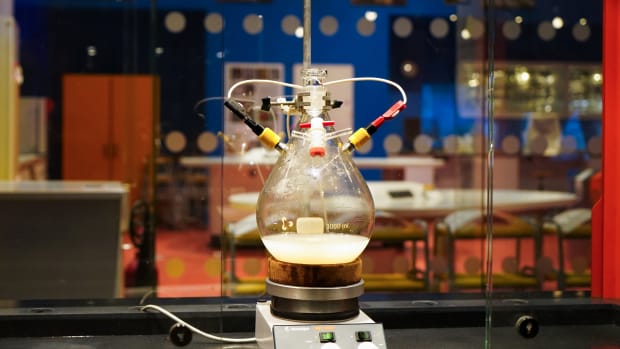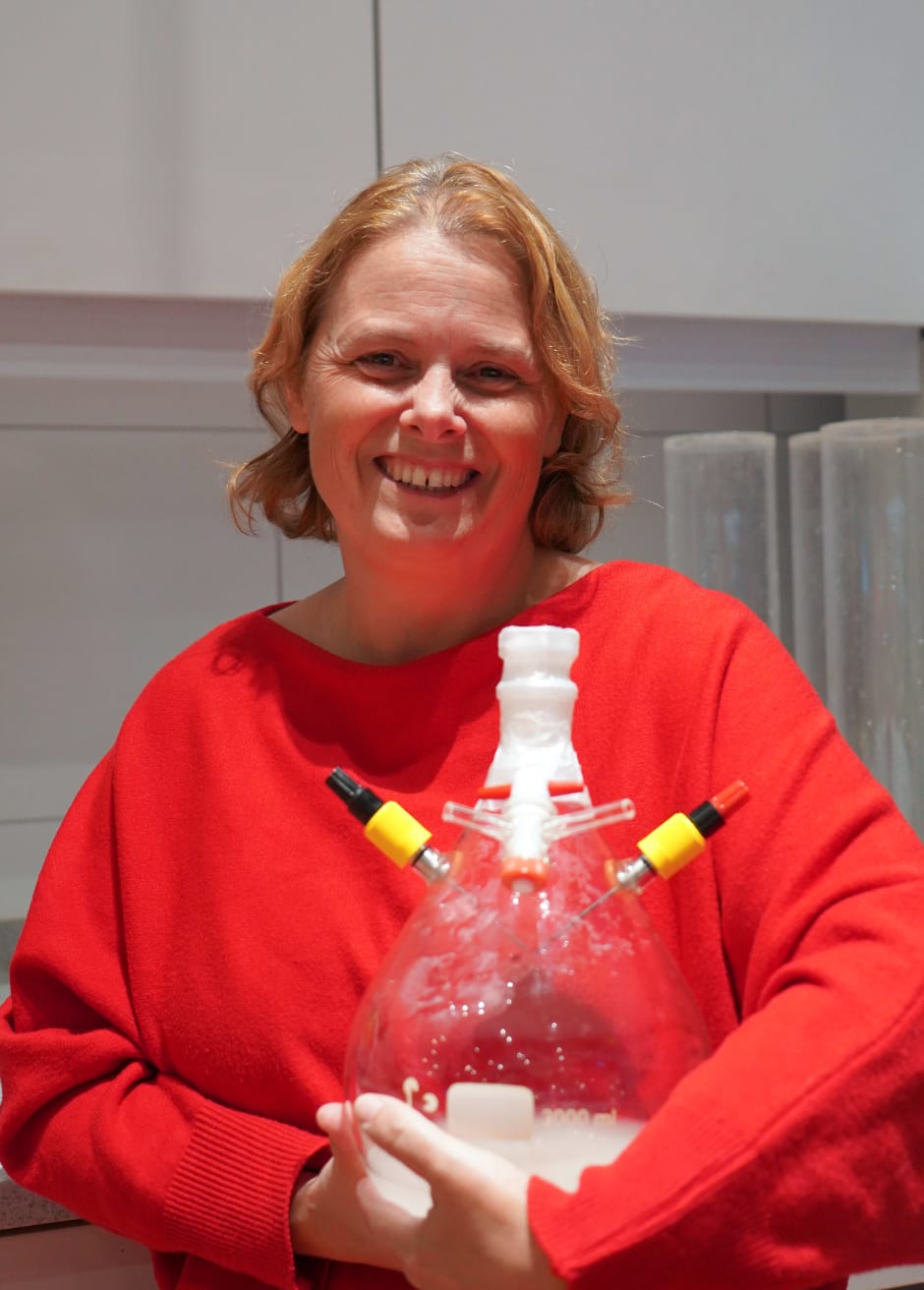
UvA chemist starts experiment in Nemo on origins of life
How did life originate on Earth? UvA chemist Annemieke Petrignani is starting a new experiment at Nemo during the Weekend of Science to get closer to the answer. “We want to simulate ‘extraterrestrial scenarios’ to learn more about the origin of life.”
On Monday, assistent professor Annemieke Petrignani puts the finishing touches to the chemistry set-up in Science Museum Nemo. On 5 and 6 October, during the Weekend of Science, an experiment will start here that should give more insight into the origin of life on other planets. Petrignani holds a spherical piece of glass, a flask in chemistry, filled with a mixture she calls “primordial soup”. Once the setup is ready, a button is turned on her cue. Lightning flashes illuminate the flask and the contents begin to bubble.

“We still know very little about the origin of life on earth four billion years ago,” Petrignani explains. “What chemicals were involved? Did it require a certain temperature or radiation? Were those substances present on Earth at all? Or did they involve a meteorite? And above all, could life have originated elsewhere in the universe?”
Primordial soup
To answer these questions, the chemist simulates three so-called “primordial soups”. These are based on one of the most classic experiments in biochemistry: the Miller-Urey experiments, named after American scientists Stanley Miller and Harold Urey. In the 1950s, these scientists showed that from simple chemicals such as ammonia, methane, water and hydrogen, complex substances such as amino acids could be formed.
Miller and Urey were convinced that all the ingredients were here on Earth. Yet there are a growing number of scientific theories suggesting that life arose with the help of extraterrestrial material. “During space missions and with telescopes, for example, unknown organic material has regularly been found,” explains Petrignani. “Amino acids not found on Earth have even been discovered on meteorites. These could well have played an important role in the emergence of life.” To investigate this, the chemist is going to simulate three “extraterrestrial scenarios”.
This is not the first time a Miller-Urey experiment has taken place at Nemo. In 2012, professor Bert Meijer of TU Eindhoven filled a flask with a mixture of simple gases, water and energy from electrical discharge (lightning).
Three follow-up experiments followed between 2017 and 2024. One flask repeated Meijer’s earlier experiment, while the second added clay and the third used UV radiation instead of electric discharge. Clay, lightning and UV radiation are also thought to have played an important role in the emergence of life on Earth.
For seven years, the flasks were locked in the museum. Recently, these flasks were transferred to Petrignani’s laboratory. This autumn, she and UvA students will open the flasks for the first time to investigate whether new substances have been created that can tell us more about the origin of life on Earth.
Extraterrestrial
At the moment, only one of those three scenarios is ready. In the “primordial soup” just prepared at Nemo, Petrignani will test the meteorite hypothesis. To do so, she filled a flask with water, clay and gases, but added an amino acid and two nucleobases derived from a meteorite. Sparks from two electrodes should then cause the mixture to be activated, so to speak, and provide the energy for chemical reactions to occur. “You should actually see the flask as a kind of reactor vessel where we put a set of chemicals together and wait to see what happens. Do we find new molecules? Do new gases form? And above all, what other building blocks do we find that are essential for life?”
In addition to this flask containing the extraterrestrial material, two more flasks will appear in the showcase later this year. For instance, Petrignani is also curious about the role of very high temperatures and high concentrations of carbon dioxide, such as on the greenhouse planet Venus. Or that perhaps ice and water formation play a role, as on the ice moons of Saturn and Jupiter - ice planets. “Telescopes and space probes have found evidence that on these planets there are conditions suitable for chemical reactions involving carbon and water, again important for the emergence of life,” Petrignani said.
The extraterrestrial scenarios will run for about five years and a sample will be taken every year. Petrignani’s team will then analyse the results of the experiments where they hope to find new substances. Petrignani: “It would be great if an unexpected molecule is suddenly present in the brews. But it would be especially great if we see significant differences between the flasks. Should we look for alien material, or should we focus more on certain conditions for carbon chemistry? That would give biochemistry a little bit more direction to get closer to unravelling the origins of life.”
On Saturday 5 October, during the Weekend of Science, Nemo will launch the new “Making Life” exhibition where Petrignani’s experiment will be on display.

